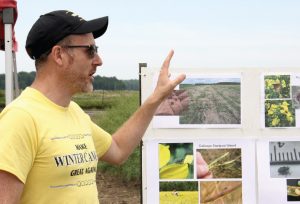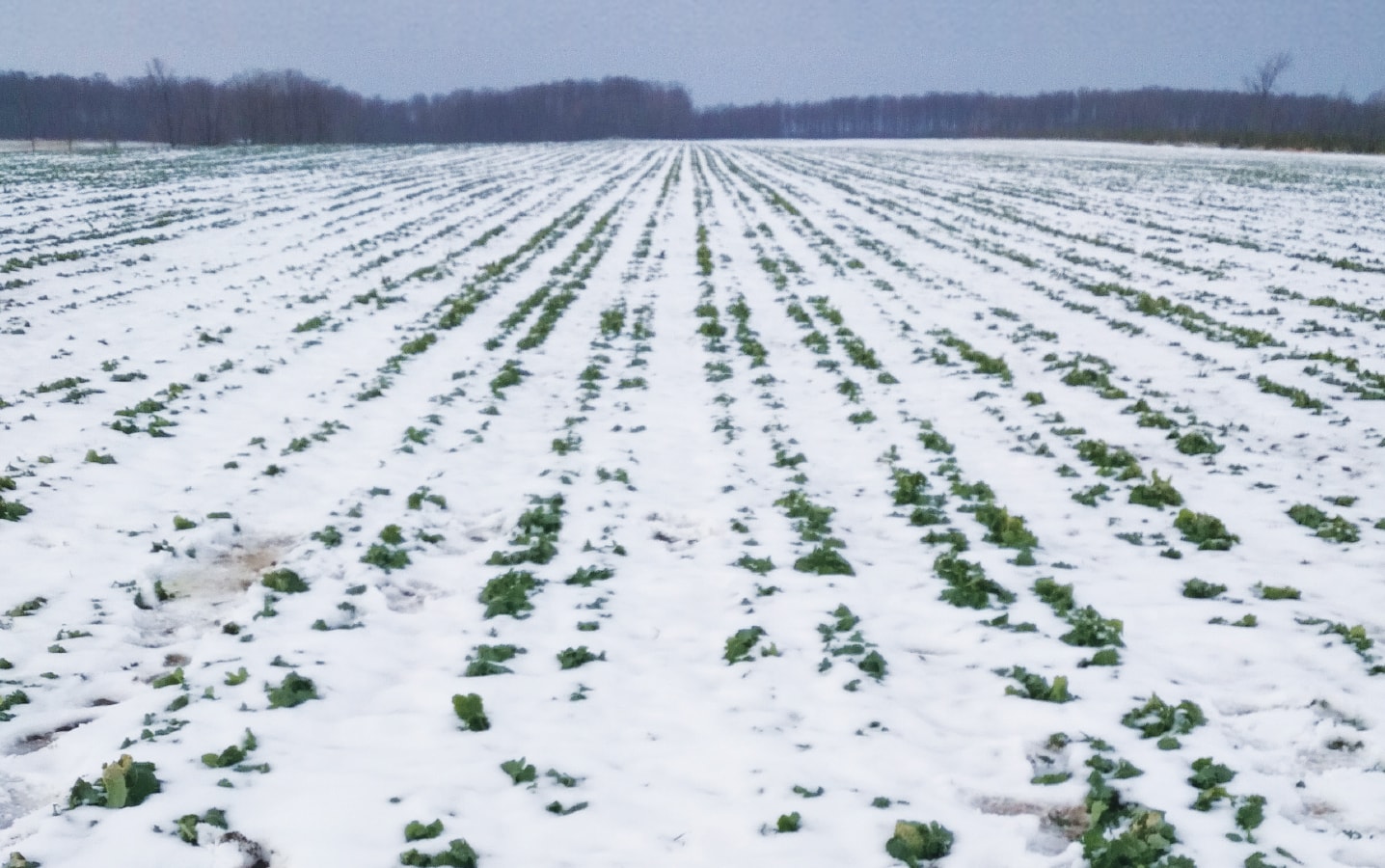Ontario growers test canola-soybeans double crop
Ontario producers are finding a new place for canola in their crop rotations. The hope is that it will not only benefit their bottom line, but diversify rotations, balance the workload and provide opportunities to manage herbicide-resistant weeds. The trick is that they are growing winter canola, which is planted in September and harvested in June
or July.
In the southernmost counties in Ontario, where winter canola has the best winter survival, soybeans dominate the landscape.

“We need to diversify crop rotations and find new ways to manage glyphosate-resistant and multiple-resistant weeds” says Eric Page, research scientist with Agriculture and Agri-Food Canada in Harrow, Ont. Canola is highly competitive with weeds, and he feels the fall-planted crop can offer suppression of problematic Canada fleabane.
Inserting winter canola in the rotation is not exactly straightforward. Corn and soybeans are harvested too late, so the canola is planted following winter wheat harvest. This limits the crop to fewer acres because of wheat’s lower profitability compared to corn and soybean. There are also concerns with putting winter canola behind the typical corn-soybean-wheat rotation. If corn is planted again after canola, phosphorus uptake issues could occur because canola does not host the mycorrhiza that corn requires to take up that nutrient. However, this could be mitigated by planting a cover crop after canola harvest to bring up mycorrhiza populations. Oats would be a good choice. But expanding to five crops to solve corn-soybean rotation issues is a stretch.
“We have also been looking at some early-maturing winter canola varieties, which could be harvested an additional five to seven days earlier, giving more time to capture high yields in double crop soybeans.”
A bigger draw for many producers is the opportunity to plant soybeans directly after winter canola and harvest two crops in one season. If soybeans are planted by around July 10, they could quite possibly pull off soybeans yields of 30 bu./ac. or more. Page says the opportunity to double-crop soybeans after canola may be easier to achieve than after winter wheat. In the southernmost counties, harvest of winter canola is about seven to 10 days earlier than winter wheat. “We have also been looking at some early-maturing winter canola varieties, which could be harvested an additional five to seven days earlier, giving more time to capture high yields in double-crop soybeans,” Page says.
Dennis Drieger from Essex county rented a sandy field to a local potato grower, then planted winter canola after the potato harvest. He followed up with double-crop soybeans planted on July 10, the day after winter canola came off. Drieger was surprised at how much the canola shattered at harvest, and how the seed moisture dropped from 12 per cent to seven per cent overnight. “Our first canola experience was interesting. We had about 10 bushels more than others in the region who planted on heavier soils, so it’s hard to say if this will work on all of our land. The real draw is the double-crop soybeans.” Drieger had a successful season with 3,250 lb./ac. (65 bu./ac.) canola and 40 bu./ac. soybeans. Even so, he says the ideal situation would be to harvest canola and plant soybeans in June.

Winter canola yields averaged over 2,700 lb./ac. (54 bu./ac.) in Ontario in 2019, so there is no doubt the crop has potential. A producer who grew canola for the first time, Nathan Van Overloop, won the Ontario Canola Growers yield challenge with 4,199 lb./ac. (84 bu./ac.). Van Overloop also seeded the canola into a sandy soil type, but the prolonged, wet spring still caused plant loss in a patch where there was standing water. Overall the crop looked fantastic but was slow to dry down. He harvested on July 23, so there was not enough time to plant soybeans.
Harold Fisher, a long-time spring canola grower, also tried winter canola for the first time and placed sixth in the yield challenge with 3,412 lb./ac. (68 bu./ac.) This is particularly exciting because Fisher had one of the northernmost winter canola fields, and with the winter crop he avoided challenges with swede midge. “I actually had a fairly thin stand because of the incredibly wet and slow spring,” says Fisher, “but we let it stand because we know canola can fill in, and we weren’t planning on putting in the work to prepare that field for spring planting.” Fisher also noted the winter canola pods seemed to be much longer than what he normally sees in spring canola, and this was his best canola yield yet.
Producers that are new to canola are willing to do things a bit differently. Many are planting on 15-inch rows with an air seeder or a corn planter with after-market canola seed plates. Seed savings are being realized because of higher rates of emergence with a precision planter, and because lower seeding rates are recommended on the wider rows to reduce crowding of plants. Page advises that “we want plant crowns to be snug to the soil surface where they are more protected. If seedlings are too close together they compete, resulting in long hypocotyls and crowns exposed well above the soil surface.” This is not a problem in spring canola, but increases risk of winter kill for the fall planted crop.
While interest in winter canola is on the rise, growers still have questions and concerns. Long herbicide carryover intervals from products used in soybeans and winter wheat are a limiting factor. More information is also needed on planting date by region, particularly at distances far from where Page is conducting his research. “We know high yields can be achieved in southern Ontario,” Page says, “and we hope to continue conducting research to answer producer’s questions.”





